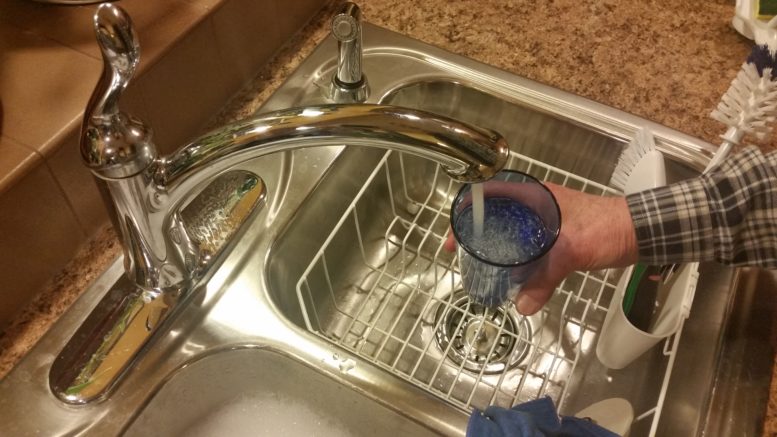By JAN LARSON McLAUGHLIN
BG Independent News
Like all communities in Ohio, Bowling Green is under orders to make sure its water isn’t flowing through lead lines on the way to its customers’ faucets.
The city has been working on its water service line inventories for a couple years now. And until recently, the city just needed to determine if any service lines are lead or some other material.
But now, it’s not enough to know if the private lines that serve customers’ homes or businesses are lead-free. The Ohio EPA is asking for another step of identifying exactly what material the lines are made of – galvanized PVC, plastic, copper or lead.
On Monday evening, Assistant Utilities Director Jim Odneal explained to the BG Board of Public Utilities where the inventory stood. Currently there are:
- 7,600 water service lines to customers. None of the city lines have been found to be lead.
- However, the makeup of 1,900 of those service lines is still unknown.
- 2,300 private lines into homes or businesses are of unknown materials.
The cost to excavate the 1,900 city lines, and go door-to-door to inspect the 2,300 private lines is expected to be high.
So the board of public utilities voted Monday to accept a $50,000 grant from the Ohio EPA for the inventory and mapping, and to pursue funding from other sources.
Though the newer service water lines are identified in detail, some of the “old-timers” hinted at the location of lines with descriptions like “east of the oak tree,” Utilities Director Brian O’Connell said.
Where the records are lacking, the city will hydro-excavate to identify the lines. However, knowing that most customers would rather avoid excavation on their properties, Odneal said the city plans to hire a GIS service to go door-to-door to inspect the pipe materials on private property. The checks will be less costly, less intrusive and quick, he said.
If lead pipes are found in the city service lines, they will be replaced, O’Connell said.
“We would replace it. We wouldn’t just let it sit there,” he said.
If lead pipes are found in the private lines at homes or businesses, the water customers will be notified and will be responsible for changing the lines or testing the water frequently.
A focus of the Environmental Protection Agency in recent years has been contamination resulting from the corrosion of lead and copper plumbing materials. This focus has resulted in additional regulations of lead and copper for public water systems.
In December of 2021, the U.S. EPA began requiring community public water systems to submit lead service line inventories to the state by Oct. 16, 2024.
In preparation to meet these requirements, public water systems have taken the opportunity to document distribution system materials during routine maintenance on both the public and private side of the meters, Odneal said.
Water distribution and GIS staff have been working over the past few years to ensure the water service line material inventory map is continually being updated – but more work is needed, Odneal said.
In addition to the EPA grant, the city has also been involved in discussions with Northwestern Water and Sewer District on the sharing of ARPA funds the district received from the Wood County Commissioners for this effort.
In March of 2022, the county commissioners set aside $1 million of the county’s American Rescue Plan Act funds to implement a countywide lead service identification program.
Eight communities in Wood County operate their own water systems, and have been invited to join in this program. They are Bowling Green, Bradner, Fostoria, North Baltimore, Pemberville, Perrysburg, Tontogany and Wayne. Other areas served by Northwestern Water and Sewer District will also be included
Since 1986, lead has been banned for use in water lines, and in the 1990s any known lead service lines in Bowling Green were replaced.
O’Connell explained the city is responsible for the portion of the waterline that extends to the curb stop, but the portion of the line going into a residence is the homeowner’s responsibility.
There is no lead present in the drinking water as it leaves the city’s water treatment plant, O’Connell said. The city treats the water to reduce the potential for lead to contaminate the drinking water. This is achieved through a corrosion control treatment process and by adding orthophosphate to the water as a corrosion inhibitor.
“Hopefully that gives customers peace of mind about what is being delivered to them,” O’Connell said.

